MSI GT680 Review
MSI GT680
With Intel's new Sandy Bridge alongside Nvidia GTX 460M graphics, 8GB of RAM and twin 7,200rpm HDDs in RAID, this surprisingly affordable gaming laptop is a beast.
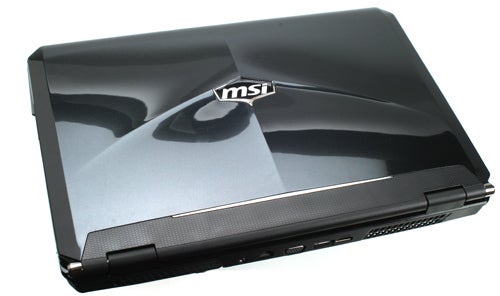
Verdict
Pros
- Blazingly fast
- Excellent value
- Class-leading battery life
- Extensive connectivity
Cons
- Not the most attractive
- Build quality sometimes suspect
Key Specifications
- Review Price: £1359.99
- Quad-core, Sandy Bridge Core i7 CPU
- Nvidia GTX 640M Graphics
- 8GB DDR3 RAM
- Twin 7,200rpm HDDs in RAID 0
- Dynaudio 4.1 Speakers
- USB 3.0 & eSATA 2
However, not only does the company’s new GT680 bring a completely different design to the table, it also sports specifications to make the most powerful laptops quake in fear. These include a quad-core Intel Core i7 Sandy Bridge processor that will run at up to 2.9GHz, Nvidia GTX 460M graphics, 8GB of RAM and twin hard drives in RAID! In fact MSI dubs it “the World’s Fastest Notebook Ever” – can the GT680 live up to this claim and still maintain the company’s value reputation?
Let’s start off with the design. Visually, it’s certainly a far more modest and attractive look overall. Unfortunately, it’s not all good news. The lid has gone from being a durable and handsome brushed metal to moulded glossy black plastic. Not only does this act as a fingerprint and dust magnet, but it doesn’t feel as solid and there’s serious flex near the hinge (though keep in mind that we are looking at an early sample, so hopefully this will be improved on retail models). Build quality of the base is far better than that found on the lid, though there’s still a little more flex than we would like near the hinge.
Inside, the semi-matte screen-bezel of the previous design is replaced by a glossy surround with a matt outer edge, where we would have preferred this the other way around. Like the lid, the palm-rest is now also glossy plastic rather than metal, though at least a prominent honeycomb pattern disguises smudges. 
On to the positives, the colour scheme of blacks, greys, silver and a dark, metallic red is quite successful, and angular lines give it the edginess many gamers will appreciate. It’s still not a patch on the awesome design of the Asus G73Jh, but at least you won’t have to try to hide it at LAN parties.
Between its metallic-red-trimmed speakers you’ll find the familiar MSI touch strip, with a white-backlit power button and controls that become backlit in red when activated. This fits in far better than the previous blue backlighting and jarring metal grille. 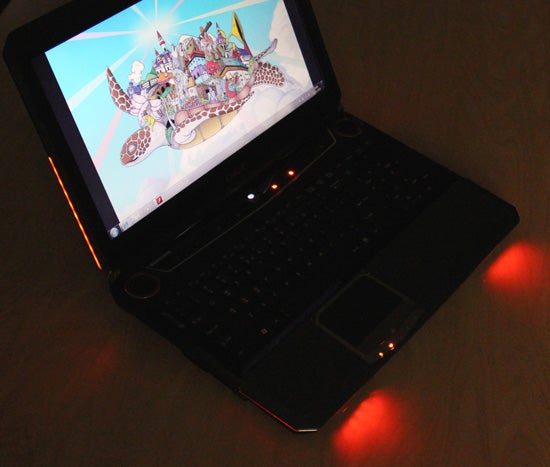
One of these touch buttons turns on orange LED strips in the lid and base of the machine, two of which act as floodlights for whatever surface it’s resting on. We’re not really fans of the effect and it’s a pity you can’t change the colour, but it will doubtless find some adherents. Overall then, at least compared to previous MSI gaming laptops, the GT680’s visual design is an evolution.
When it comes to connectivity, as you might expect from a next-generation laptop, the GT680 is very well endowed. Video can be output over either VGA or HDMI 1.4, which supports resolutions higher than 1,920 x 1,080 and Full HD stereoscopic 3D, as well as 7.1 digital audio. Uniquely to MSI (as far as we’re aware), there are no less than four 3.5mm audio jacks so those without decoders can still output up to 7.1 to cheaper surround sound speaker systems, and one of these functions as a digital output too. 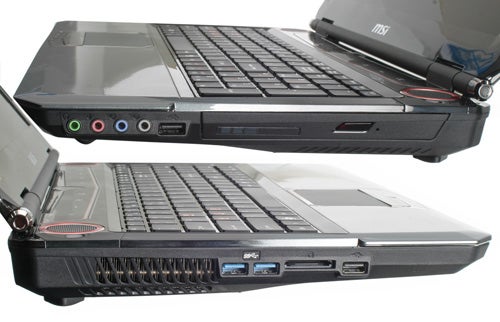
On the data front there’s a card reader which supports SD/HC and MMC, two USB 2.0 ports, two super-speedy USB 3.0 ports and an eSATA II port, meaning transfers with compatible media should be lightning-fast. For networking there’s Gigabit Ethernet and Wi-Fi N, and Bluetooth rounds out its wireless credentials. 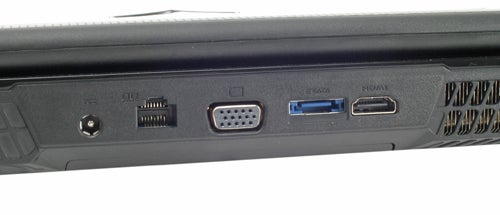
Even the webcam is worth a mention. As we also saw with the Dell XPS 17, it’s of the HD variety, managing 720p at 30fps – perfect for HD video services like the new Skype.
Only the lack of a Blu-ray drive on our GT680R model disappoints, but MSI had to make cuts somewhere to maintain its (relatively) bargain price, and the PC game on Blu-ray has yet to come out. Besides, adding an external, slimline Blu-ray drive at any stage shouldn’t set you back more than £80, while those who opt for MSI’s GT680H get this and an SSD boot drive for £240 extra.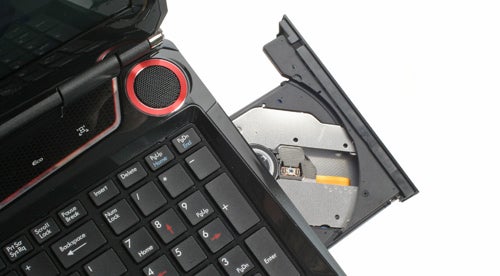
MSI has also made progress on the usability front. The aforementioned touch controls are very responsive, and the GT680’s isolation keyboard now finally has its Fn key to the inside of Ctrl, a blessing to those who regularly switch between desktop and laptop keyboards. Key placement in general is excellent, with shortcuts exactly where you would hope to find them. 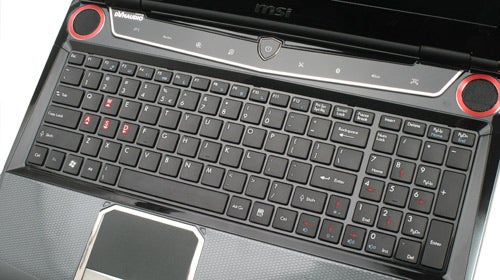
Keys are well-spaced and though feedback is shallow, they manage to give enough action to prevent typing from being unpleasant. More detrimental is that the entire upper left area (including the WASD ‘gaming’ keys) feels lose and keys rattle audibly – we’re sincerely hoping that this is another fault that will be fixed in retail models. Even if it isn’t, it’s not nearly as off-putting as the dodgy spacebar on the Novatech X70 CA Pro, and the GT680 remains perfectly usable for both typing and gaming.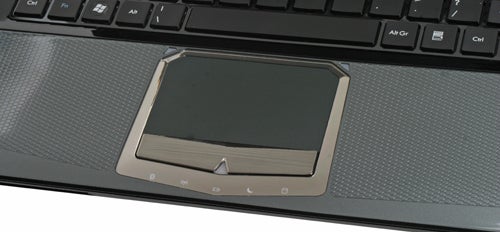
Like its predecessor, the touchpad here is large and comfortable, though MSI still hasn’t added multi-touch. To be honest this is not a major concern, as we got on perfectly well without it for years, but it’s a nice-to-have and practically every other laptop on the planet features it. The pad’s buttons are worked into a single, brushed metal rocker switch, but aside from being a tad on the stiff side they offer no reason for complaint.
We’ve been consistently impressed with the displays found on MSI’s gaming laptop range, and thankfully the GT680 does nothing to alter that impression. The glossy, 15.6in screen sports a resolution of 1,366 x 768, which is par for the course. While we do like seeing 1080p panels even with a screen this small, you’ll be able to enjoy higher detail settings in games while staying at the panel’s native resolution. The glossy screen finish turns it into a mirror with ambient light present, but does at least enhance perceived contrast and colour vibrancy.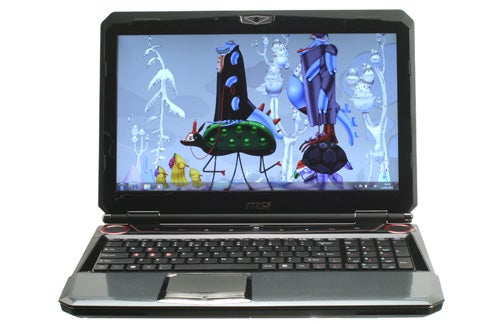
Not that the panel needs much help in these regards. Colours are never less than rich and vivid, while contrast is very good. As with many entertainment-oriented laptops, white differentiation has been sacrificed in favour of excellent performance at the dark end of the greyscale, meaning you’ll see all the detail in gloomy games and films. This is aided by impressive horizontal viewing angles, lacking the handicap of contrast shift. Some minor colour shift does occur, and vertical angles are as weak as ever so you have to be careful how you angle the display, but it’s nonetheless an excellent performer.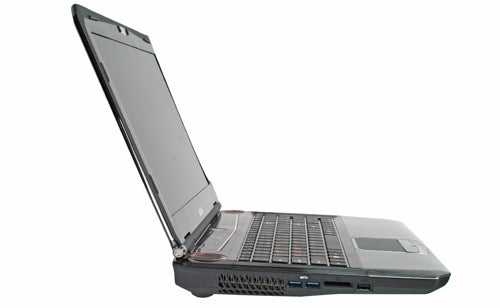
The positives continue with fairly even backlighting and no sign of light bleed. Dithering is present if you look carefully, but there’s not a hint of banding and sharpness is flawless. Overall it’s certainly superior to the vast majority of laptop screens.
Nor does the GT680’s audio let things down. Helped along by THX TruStudio PRO processing, the four Dynaudio-branded speakers and subwoofer produce a soundstage offering excellent depth and dimensionality. Explosions, gunshots and thumping tracks are pushed out with plenty of body, as the speakers offer far more bass than most laptop setups manage. 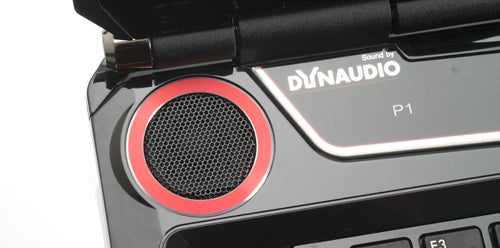
Just be sure to keep them below their maximum volume, where some distortion is introduced – but worry not, you’ll still easily fill a small room at lower settings. Our one criticism is a slight lack of clarity, but for entertainment these easily match the audio performance of the Toshiba Qosmio X500 and are almost on par with the Asus G73Jh.
So far then, the GT680 has held up pretty well, with the loose keyboard being the only real issue. But specifications are where this MSI gets really interesting since, as already mentioned, it’s based on Intel’s brand-new, 32nm Sandy Bridge platform. This not only brings halfway-decent CPU-integrated graphics (though naturally these are not relevant here) but also more processing power than ever before, while not overly taxing your electricity bill. 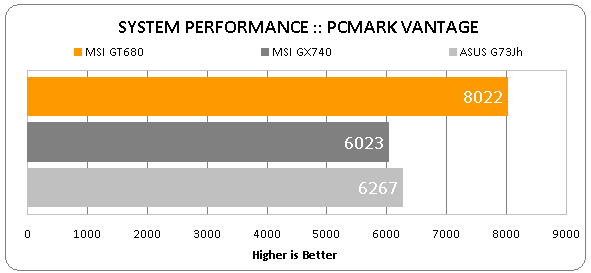
Specifically, MSI has selected the Core i7 2630QM for its latest gaming laptop. This quad-core CPU features hyper-threading to support up to eight virtual cores, and though it runs at 2GHz by default, it will turbo-clock up to 2.9GHz when all of its cores aren’t in use and thermals allow.
To give a good indication of the increase in performance Sandy Bridge brings, just compare to the Asus G73Jh‘s 45nm Core i7 720QM in the above chart, which offers the same number of cores and a similar maximum frequency of 2.8GHz – though its standard clock is 1.6GHz, and the MSI’s raided hard drive array also has an impact. However, it’s undeniable that on the processing front, the GT680 is easily the fastest mobile machine we’ve seen.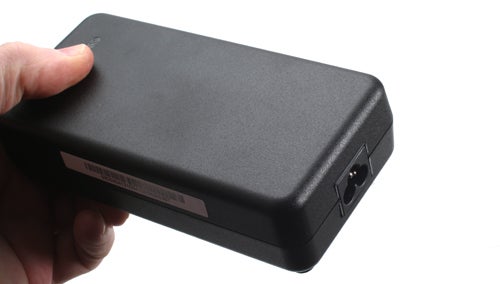
Retail GT680 models will come with 8GB of DDR3 memory, which is upgradeable as the laptop supports four DIMM slots (unlike the standard Intel configuration which only supports two). When comparing results, do note that our review sample actually came with 16GB of memory. We’re glad MSI has toned this down though; most users won’t need more than four, and eight should be plenty for intensive usage and future games. In fact, with 8GB of RAM, a blistering quad-core CPU and CUDA-acceleration, we can’t think of a single task the GT680 wouldn’t tear through with contemptuous ease.
Despite not being nearly as gargantuan as other gaming laptop chassis we’ve seen, the GT680’s can house dual hard drives, and MSI’s “the World’s Fastest Notebook Ever” claim comes from filling both of these with SSDs in RAID. Though you’re always free to implement this setup yourself, for the GT680R model’s £1350 MSRP you can’t really expect an SSD boot drive. Instead, MSI has gone for the next best thing, and put two ‘traditional’ 7,200rpm, 500GB hard drives in RAID 0, still making for a very speedy and generous 1TB storage system. Just make sure to maintain regular backups, since it also means that failure in either drive may lose you all your data. 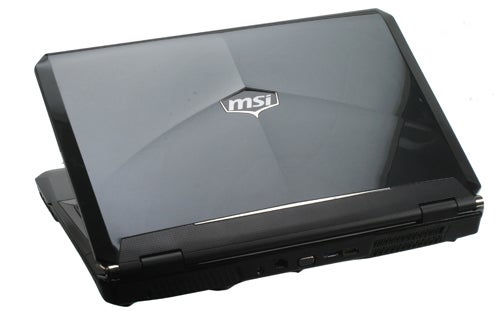
If you do want the extra speed out of the box, the aforementioned GT680H model not only adds a Blu-ray drive but also a 120GB Intel SSD for a £240 premium.
What’s perhaps most impressive about MSI’s gaming laptop is its incredible battery life. Thanks to a high-capacity 7800mAh/87Wh, 9-cell battery and the efficiency of Sandy Bridge, it managed an astounding three hours and 46 minutes in our light productivity test. Considering most portable ‘gaming’ machines fail this test altogether, it’s quite an achievement. The only contender to come close is the Acer Aspire 5745DG, and that machine offers considerably less power on the CPU and GPU fronts, as well as sporting only a single hard drive. 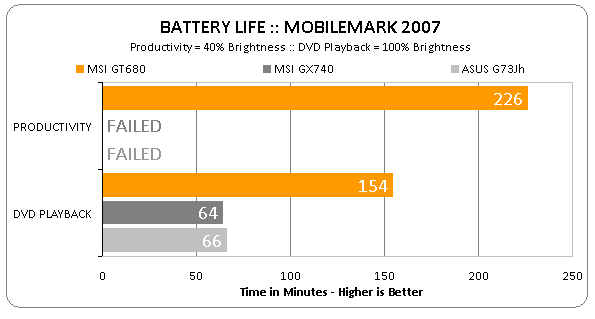
On the ‘proper’ gaming laptop front then, the GT680 rules supreme, and with nearly two and a half hours in the intensive DVD test, is the only one that will let you watch even the longest films on the go.
Thankfully, the GT680’s so-far excellent overall performance is supported by graphics that deserve the name of ‘gaming-worthy’. Backed by 1.5GB of dedicated video RAM, Nvidia’s GeForce GTX 460M is superseded by the GTX 470M, 480M and 485M, but is nonetheless still a very capable chip in the mobile space. 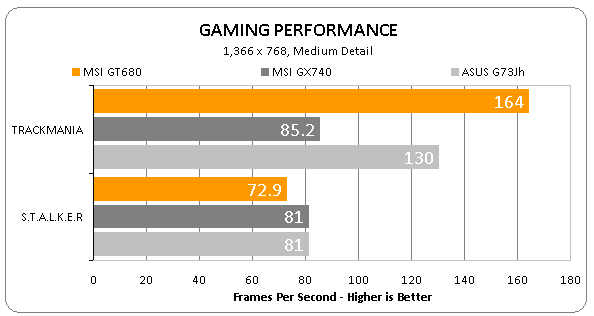
In fact, it comes out top in our standard TrackMania Nations Forever test, though that’s more due to the fast CPU. In Stalker: Call of Pripyat (a more demanding DirectX 11 title) it shows its true colours better, slightly trailing the MSI GX740 and Asus G73Jh which both use AMD’s top-end Mobility Radeon 5870.
Switching to Ultra detail and upping the resolution to 1080p in Stalker, the GT680 remained undaunted, managing a 43.8 frames per second (fps) average, where the G73Jh managed 48.6fps at the same settings. 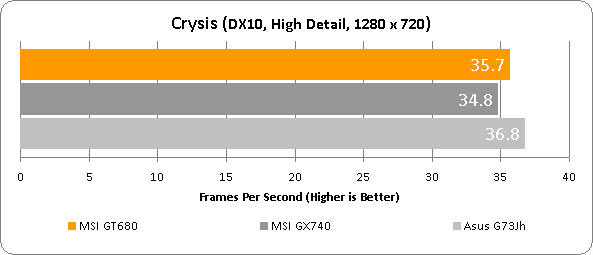
Even the incredibly demanding Crysis is playable if you compromise a little, managing a smooth 35.7fps average at High Detail on 1,280 x 720 – again roughly on par with the Radeon 5870-equipped machines. Notching detail up to Very High at the same resolution resulted in a just-about-playable 23.1fps, but here it’s really reaching its limits.
Unlike the Acer Aspire 5745DG‘s underpowered GT 425M, the GT680’s GTX 460M is powerful enough to run quite a few games in stereoscopic 3D and on the GT680H 3D Blu-rays aren’t an issue, though of course you’ll need a 3D monitor/TV and glasses. 
So far then, MSI has created an absolute beast, which doesn’t get too noisy in use. As usual with sub-£1500 gaming laptops, graphics are its weakest link, but in every other regard you’re getting power, connectivity and features that will easily match even recent desktops, paired with a good screen and very competent speakers. In fact, though we’re not overly impressed with the design and build quality in general, and could have wished for the keyboard to be backlit, our only real niggle is with the rattle of keys in the upper right corner (which is hopefully a flaw that’s unique to our pre-production sample). 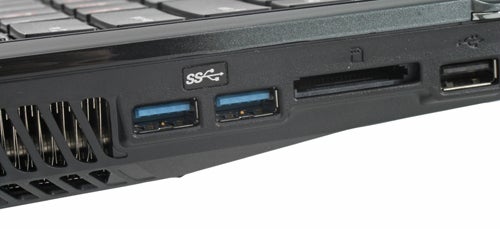
As usual, the price of entry MSI charges is more than reasonable too, with an MSRP of £1,359.99 for this configuration of the GT680 (designated the GT680R). The version with an SSD boot drive and Blu-ray drive (GT680H) will set you back £1,599.99, and if you can afford it the £240 extra is definitely worthwhile. In fact, that model has a better chance of living up to MSI’s claim, as it should be one of the fastest laptops around, with everything but its graphics as good as it gets in the mobile sector.
As retail prices for the GT680R are likely to be lower than £1,360 within weeks of its February launch, it’s a bit of a bargain if you need what it offers. However, if you’re on a budget, the older GX740 will offer similar performance in most games (though it’s inferior in many other ways) and is available for under £900.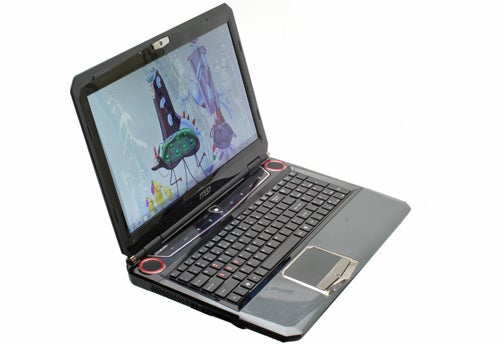
Verdict
It’s not the most stylish or best-built gaming laptop we’ve seen, but when it comes to features and power for the money, few rivals can match the MSI GT680. Throw in an above-average screen, impressive speakers and excellent battery life, and this is one portable games machine that’s easy to recommend.
How we test laptops
Unlike other sites, we test every laptop we review thoroughly over an extended period of time. We use industry standard tests to compare features properly. We’ll always tell you what we find. We never, ever, accept money to review a product.
Trusted Score
Score in detail
-
Performance 9
-
Design 7
-
Value 8
-
Features 9
-
Battery Life 8
Processor, Memory & Storage
| Processor | Intel Core i7 2630QM |
| Processor Speed Standard (Gigahertz) | 2 - 2.9GHz |
| Memory (RAM) (Gigabyte) | 8GB |
| Hard Disk Drive (HDD) (Gigabyte) | 1000GB |
| Hard Disk Drive Speed (RPM) | 7200rpm |
| Solid State Drive (SSD) | No |
| DVD Optical Drive | DVD Rewriter |
Graphics & Sound
| Graphics | Nvidia GTX 640M |
| Display (Inch) | 15.6in |
| Display Finish | Glossy |
Communication
| Ethernet | Gigabit |
| Mobile Broadband/3G | No |
| Bluetooth | Yes |
| Webcam | HD |
Connectivity
| Audio Connections | 4x 3.5mm for analogue surround sound, headphone and microphone |
Software
| Operating System | Windows 7 |
Other
| Battery life (Hour) | 226hr |
| Special Features | Sandy Bridge CPU, Orange LED lighting, Gaming graphics |
| Battery | 7800mAh/87Wh/9-cell |
Physical Specifications
| Weight (With Battery) (Kilogram) | 3.5kg |
| Dimensions Width (Millimeter) | 395mm |
| Depth (Millimeter) | 267mm |
Data
| Card Reader | SD/HC, MMC, MS/Pro/Duo |

